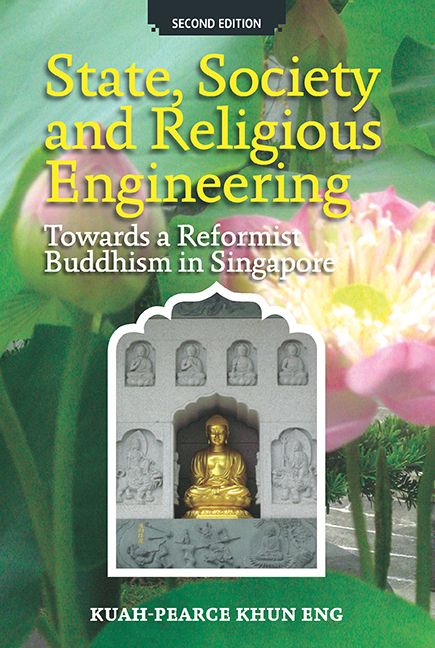Book contents
- Frontmatter
- Contents
- List of Diagrams
- Note on Romanisation
- Preface to the Second Edition
- Acknowledgements to the Second Edition
- Introduction
- PART 1 INVENTING A RELIGIOUS TRADITION
- PART 2 STATE, SOCIETY AND RELIGIOUS ENGINEERING
- PART 3 TOWARDS A REFORMIST BUDDHISM
- Conclusion
- Postscript to the Second Edition: Towards a Humanist and Socially-engaged Buddhism
- Glossary
- Bibliography
- Index
Postscript to the Second Edition: Towards a Humanist and Socially-engaged Buddhism
Published online by Cambridge University Press: 21 October 2015
- Frontmatter
- Contents
- List of Diagrams
- Note on Romanisation
- Preface to the Second Edition
- Acknowledgements to the Second Edition
- Introduction
- PART 1 INVENTING A RELIGIOUS TRADITION
- PART 2 STATE, SOCIETY AND RELIGIOUS ENGINEERING
- PART 3 TOWARDS A REFORMIST BUDDHISM
- Conclusion
- Postscript to the Second Edition: Towards a Humanist and Socially-engaged Buddhism
- Glossary
- Bibliography
- Index
Summary
In the aftermath of the 9/11 incident where Islamic extremist groups under Osama Bin Laden decimated the Twin Towers of the World Trade Centre in New York, religions and religious movements have come under close scrutiny. It is unlikely that full religious freedom will be condoned in many parts of the world, including the countries that expound democratic ideals of the Western world. What one is likely is guided democracy. Many local religious groups as well as those with global networks will be subjected to either outright or discreet policing by the government and other international law enforcement agencies. Extremist religious movements, including those that champion nationalism and separatism will be regarded as high-risk religious movements capable of terrorist activities and will be monitored closely. While previously the actions of the Singapore government in religious engineering were met with cynicism and criticism by Western governments and human rights groups, such actions are now likely to be regarded as acceptable or even desirable. Furthermore, it is also likely that Asian as well as Western governments might adopt certain legislation to allow them to monitor and to intervene in certain types of religious activities. In this sense, the terrorist attacks will hasten the move towards religious engineering in both local and global contexts.
Today, as we seek to understand the role of Buddhism in modern society, an important role that is gaining currency rapidly is Buddhism's journey into humanity where apart from its role in shaping the morality of individuals and communities through its values, it is increasingly becoming socially-engaged. Socially-engaged Buddhism has witnessed a large increase in membership throughout the world where its members attempt to fight against increasing materialism and consumerism. Here, these socially-engaged Buddhists help shape a more humane local and global community through their concrete social actions for the benefit of the poorer segment of the local and global communities. Through their contributions in material form, time and actions, they are building the groundwork for the emergence of a global Buddhist philanthropic culture.
For the last three decades, socially-engaged Buddhism has gradually increased its influence on the global stage and attracted new members from various parts of the world. In particular, Buddhism has experienced rapid development in America, Europe and Australia, alongside its stronghold in the various Asian countries. Parallel to this is the rapid revival of Buddhism among the youthful population.
- Type
- Chapter
- Information
- State, Society and Religious EngineeringTowards a Reformist Buddhism in Singapore (Second Edition), pp. 299 - 302Publisher: ISEAS–Yusof Ishak InstitutePrint publication year: 2009

